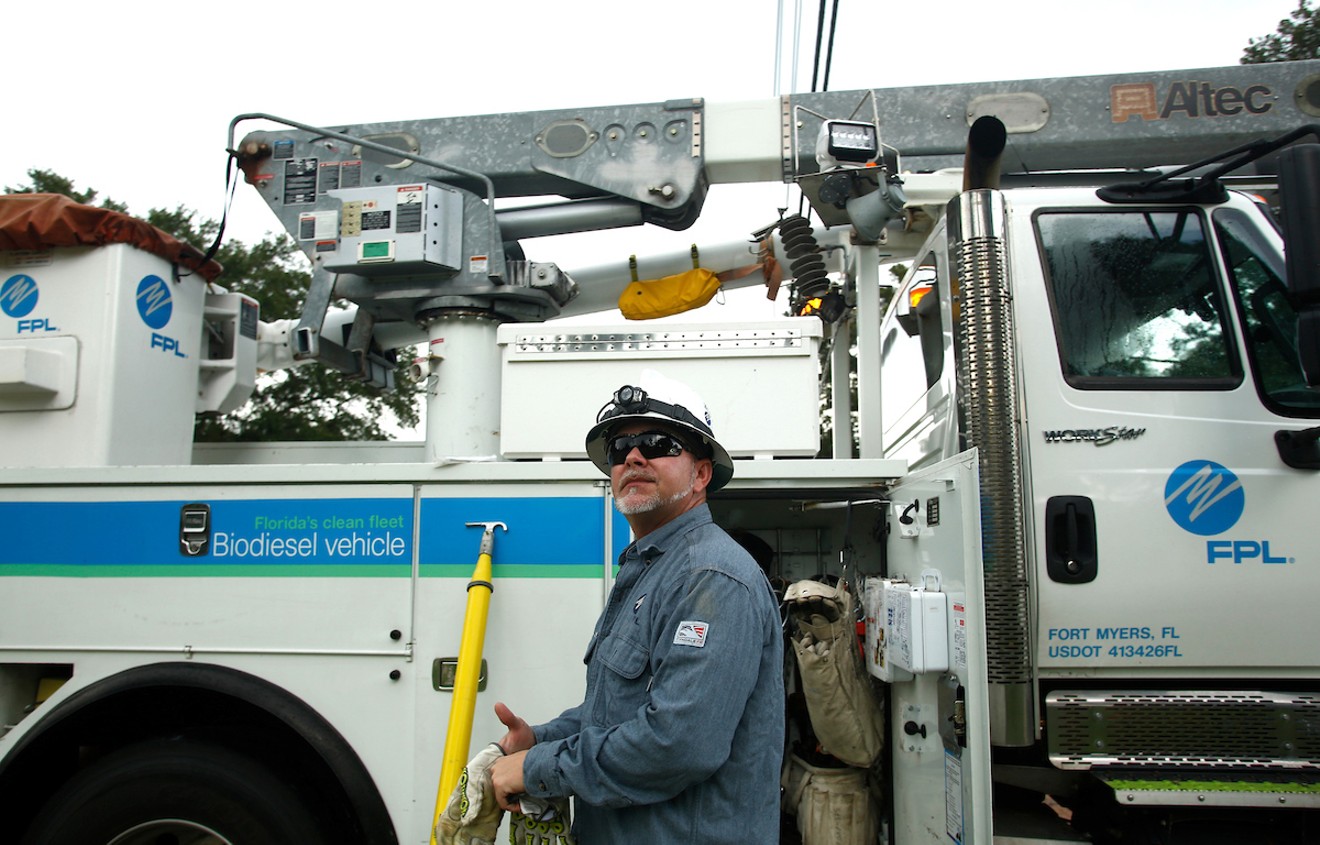Miami is known for getting slammed by hurricanes, which tend to blow down power lines. So after Irma knocked out electricity for roughly 90 percent of Florida Power & Light's customers in September, many residents asked why most of FPL's lines are still above ground. The company is now reportedly "considering" burying more of its lines, but one Miami-Dade County commissioner thinks there's a faster route to harden Florida against storms. She wants the state to force FPL to put lines underground.
"It's time to bite the bullet," Commissioner Daniella Levine Cava tells New Times. "I understand there's a cost to burying the lines, but when most of the city loses power, that's extremely disruptive, and there's a cost to that too."
At the November 21 commission meeting, Cava will ask the county to approve a resolution formally asking FPL's regulator — the state Public Service Commission (PSC) — to require "to the maximum extent possible" the undergrounding of lines. If passed, the measure would instruct the county's lobbyists in Tallahassee to push state legislators to act. Levine Cava says that she has not yet spoken to FPL about the idea but that she was researching estimates on how much the project might cost. (Spokespeople for FPL did not immediately respond to a message from New Times about the proposal.)
FPL is asking the PSC to let it charge customers more to recoup costs the company incurred because of the storm. (FPL made a $1.7 billion profit in 2016.) Levine Cava says she wants the PSC to bar FPL from adding those fees unless the company agrees to bury more lines. FPL regularly adds charges to consumers' bills after storms, including hiking rates $318 million after Hurricane Matthew in 2016. Levine Cava argues that if the company spent a bit more money upfront now, it could cut down on recurring storm costs in the future.
FPL's public stances on burying lines have been inconsistent: On the one hand, the company has said in the past it is not opposed to burying more lines and that it tries as often as possible to build new lines underground. At the moment, roughly 37 percent of FPL's distribution system sits underground.
But at the same time, the company has engaged in some high-profile fights with cities that want more lines buried. Notably, FPL has fought the cities of Miami, South Miami, Coral Gables, and Pinecrest for years to build some 89 miles of above-ground transmission lines extending from Turkey Point Nuclear Generating Station in Homestead. After years of back-and-forth, the City of Miami settled a legal dispute with FPL over the matter: The city agreed to drop its lawsuit and pay FPL $27 million as long as the company agreed to bury five miles of the proposed corridor underground for at least 40 years. Environmentalists were reportedly upset and asked why the city let the company do what it wanted with the other 84 miles.
Typically, FPL charges local municipalities that want their lines buried while covering 25 percent of the costs. In the 12 years between Hurricanes Wilma and Irma, the company spent $3 billion hardening its grid against storms, including burying 60 lines underground, FPL says. The majority of the money went toward projects aimed at restoring power faster instead of preventing it from going out in the first place.
Undergrounding lines is costly for the company, and FPL regularly warns that buried lines are still susceptible to flooding and might not be a "magic bullet" to harden against storms. The company's critics, though, say the move seems like an obvious fix. Critics also argue that, because FPL charges cities for construction costs, lower-income areas can't afford to harden their power grids against storms.
Levine Cava says that another storm-hardening push is needed and that forcing the company to bury lines seems like a prudent, long-overdue move. She wrote in her resolution that while "some progress toward achieving widespread undergrounding has certainly been made in the past decade since Wilma, much work still remains to be done, especially in lower- and middle-income communities that cannot afford to self-fund undergrounding."
Plus, she wrote, undergrounding looks nicer. Who wants to stare at all of those poles and wires anyway?
[
{
"name": "Air - MediumRectangle - Inline Content - Mobile Display Size",
"component": "19274298",
"insertPoint": "2",
"requiredCountToDisplay": "2"
},{
"name": "Editor Picks",
"component": "17482312",
"insertPoint": "4",
"requiredCountToDisplay": "1"
},{
"name": "Inline Links",
"component": "18711090",
"insertPoint": "8th",
"startingPoint": 8,
"requiredCountToDisplay": "7",
"maxInsertions": 25
},{
"name": "Air - MediumRectangle - Combo - Inline Content",
"component": "17482310",
"insertPoint": "8th",
"startingPoint": 8,
"requiredCountToDisplay": "7",
"maxInsertions": 25
},{
"name": "Inline Links",
"component": "18711090",
"insertPoint": "8th",
"startingPoint": 12,
"requiredCountToDisplay": "11",
"maxInsertions": 25
},{
"name": "Air - Leaderboard Tower - Combo - Inline Content",
"component": "17482313",
"insertPoint": "8th",
"startingPoint": 12,
"requiredCountToDisplay": "11",
"maxInsertions": 25
}
]












